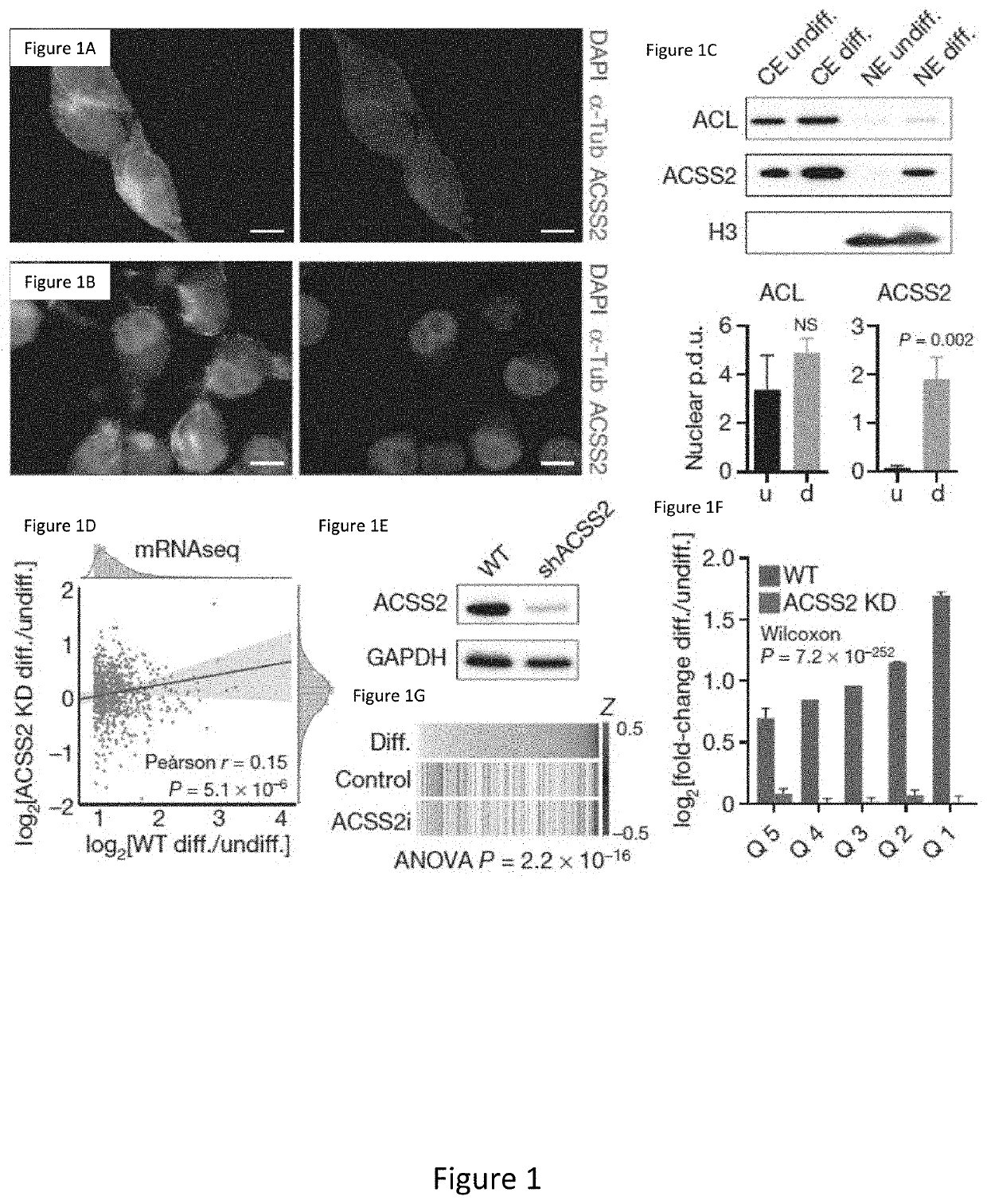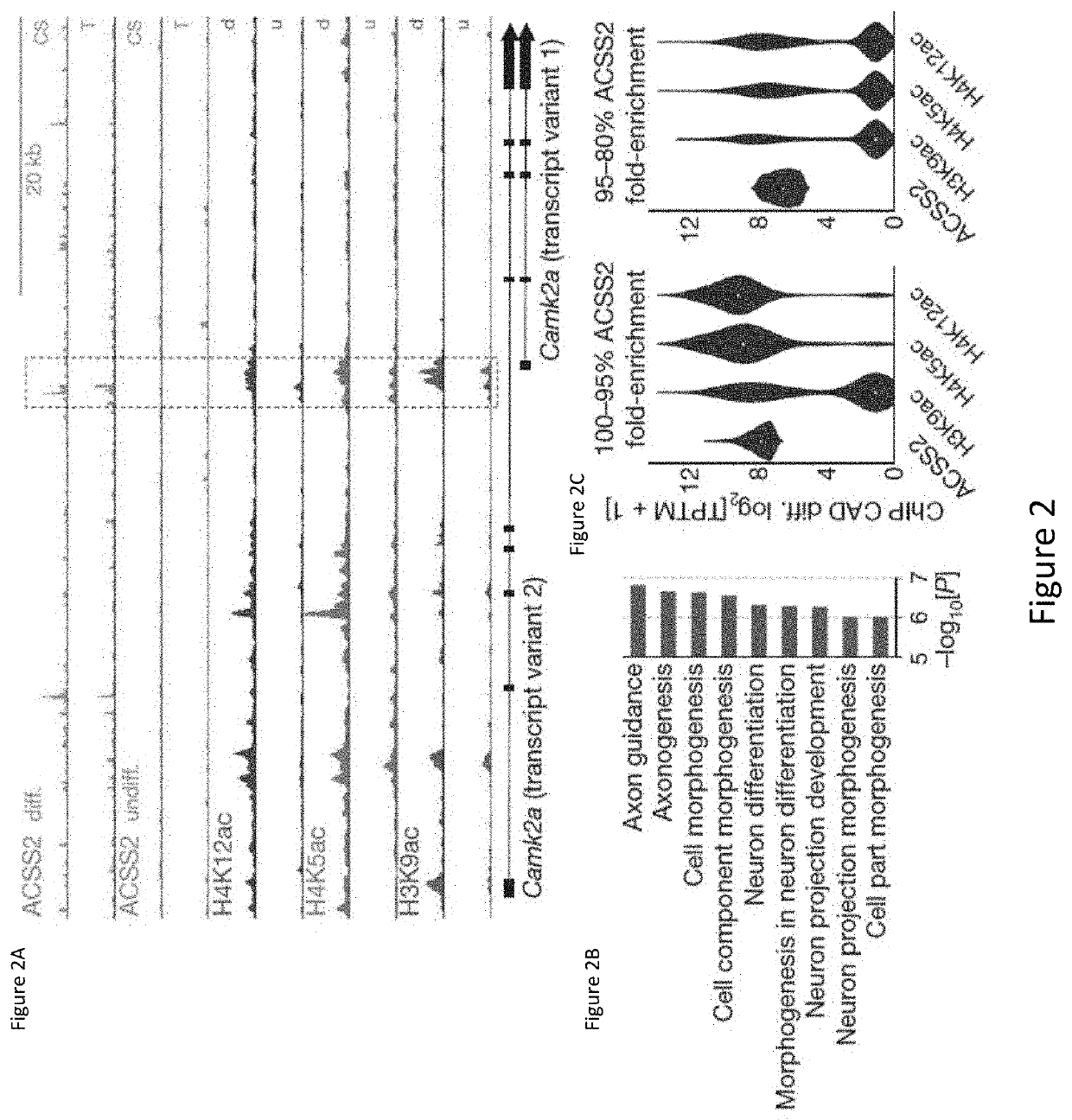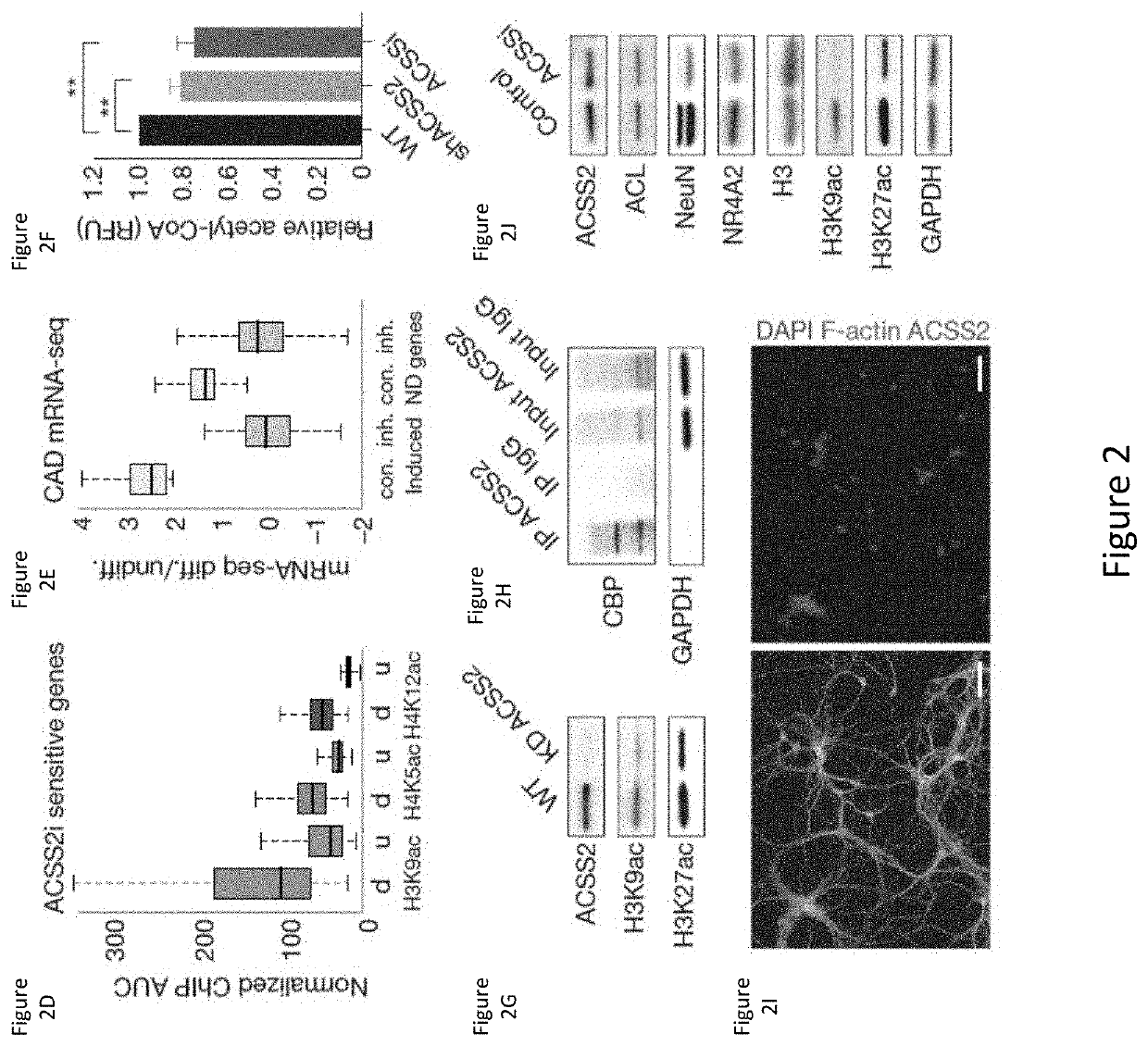Compositions and methods for inhibiting acss2
a technology of acss2 and composition, applied in the field of compositions and methods for inhibiting acss2, can solve the problems that the mechanisms that regulate neuronal histone acetylation in long-term memory remain incompletely understood
- Summary
- Abstract
- Description
- Claims
- Application Information
AI Technical Summary
Benefits of technology
Problems solved by technology
Method used
Image
Examples
experimental examples
[0292]The invention is further described in detail by reference to the following experimental examples. These examples are provided for purposes of illustration only, and are not intended to be limiting unless otherwise specified. Thus, the invention should in no way be construed as being limited to the following examples, but rather should be construed to encompass any and all variations which become evident as a result of the teaching provided herein.
[0293]Without further description, it is believed that one of ordinary skill in the art can, using the preceding description and the following illustrative examples, make and utilize the present invention and practice the claimed methods. The following working examples therefore are not to be construed as limiting in any way the remainder of the disclosure.
example 1
A Synthetase Regulates Histone Acetylation and Hippocampal Memory
[0294]Metabolic production of acetyl coenzyme A (acetyl-CoA) is linked to histone acetylation and gene regulation, but the precise mechanisms of this process are largely unknown. The data presented herein demonstrates that the metabolic enzyme acetyl-CoA synthetase 2 (ACSS2) directly regulates histone acetylation in neurons and spatial memory in mammals. In a neuronal cell culture model, ACSS2 increases in the nuclei of differentiating neurons and localizes to upregulated neuronal genes near sites of elevated histone acetylation. A decrease in ACSS2 lowers nuclear acetyl-CoA levels, histone acetylation, and responsive expression of the cohort of neuronal genes. In adult mice, attenuation of hippocampal ACSS2 expression impairs long-term spatial memory, a cognitive process that relies on histone acetylation. A decrease in ACSS2 in the hippocampus also leads to defective upregulation of memory-related neuronal genes that...
example 2
[0336]The physiological sources of acetate include 1) acetylated proteins; 2) bacterial fermentation in colon; and 3) ingested ethanol. However, it is unknown if alcohol is destined for neuronal chromatin (FIG. 17).
[0337]To study the effects of acute alcohol administration, mice are injected intraperitoneally with EtOH-13C2, to mimic “binge” drinking. Mass spectrometry is used to determine the acetylation of liver and brain histones. Heavy C acetate is incorporated into liver and brain histones by 1 hour post IP injection (FIG. 18).
[0338]Next, it was determined if ACSS2 is required for heavy C acetate incorporation into hippocampus acetylated histones. ACSS2 KD in dorsal HPC leads to A loss of incorporation into dorsal HPC (4 h). The radar plot displays the relative abundance of the heavy isotope (as compared to the light one). The heavy isotope is higher in the knock-down as compared to wild type only in hippocampus ventral and in muscle. In hippocampus dorsal it remains at ...
PUM
| Property | Measurement | Unit |
|---|---|---|
| temperature | aaaaa | aaaaa |
| w/w | aaaaa | aaaaa |
| pH | aaaaa | aaaaa |
Abstract
Description
Claims
Application Information
 Login to View More
Login to View More - R&D
- Intellectual Property
- Life Sciences
- Materials
- Tech Scout
- Unparalleled Data Quality
- Higher Quality Content
- 60% Fewer Hallucinations
Browse by: Latest US Patents, China's latest patents, Technical Efficacy Thesaurus, Application Domain, Technology Topic, Popular Technical Reports.
© 2025 PatSnap. All rights reserved.Legal|Privacy policy|Modern Slavery Act Transparency Statement|Sitemap|About US| Contact US: help@patsnap.com



